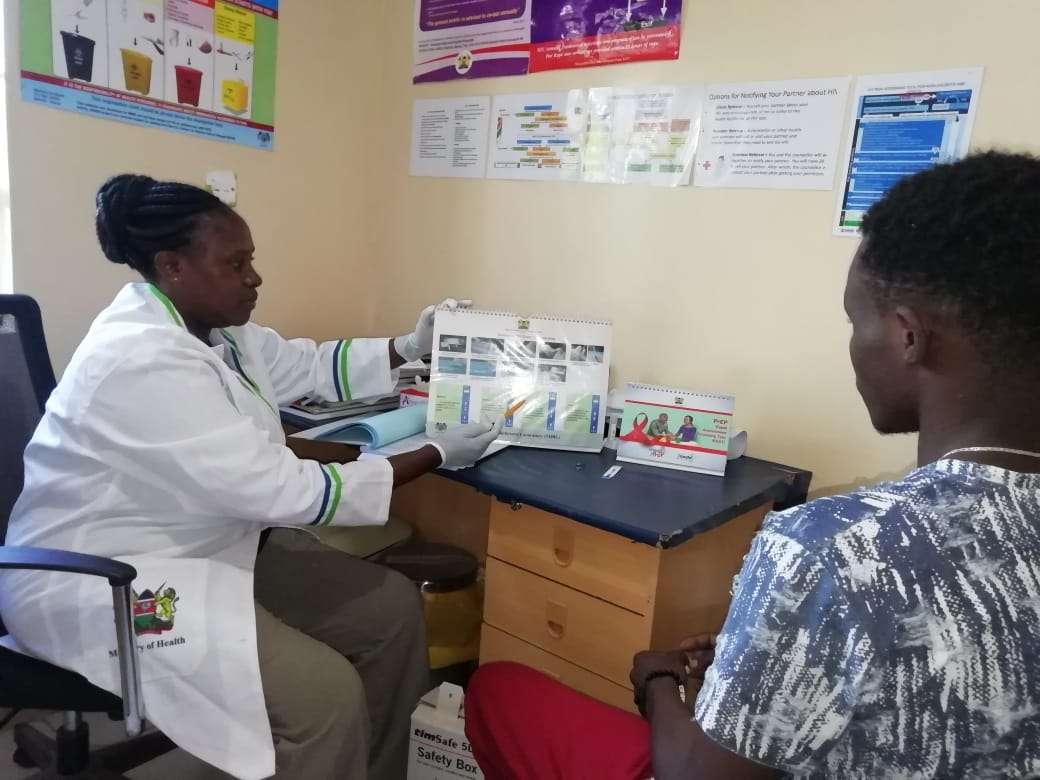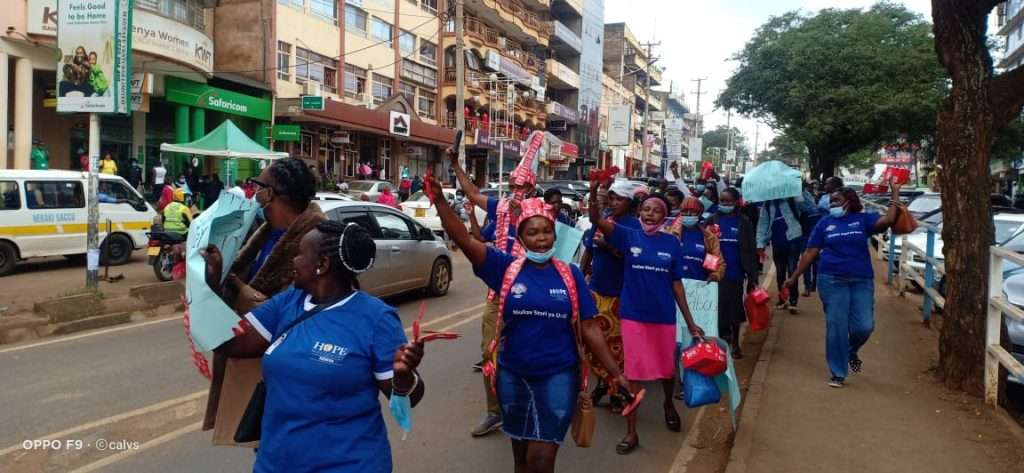
HWWK works with other stakeholders to develop and implement strategies and interventions that increase access and utilization of health services to youth and children- its primary beneficiaries.
We facilitate the access to comprehensive HIV and SRH&R services, education, better job opportunities, and protection from violence.
HWWK also facilitates its secondary beneficiaries which include key and priority populations to access appropriate Health and HIV prevention, treatment and care services across the country.
The Constitution of Kenya 2010 guarantees the rights of an individual to the highest attainable standard of health, including reproductive health. It underscores the importance of prioritizing the needs of vulnerable and marginalized groups in provision of health care. According to the Children’s Act 2001, every child shall have a right to health and medical care the provision of which shall be the responsibility of the parents and the Government. In a study by the Kenya National Human Rights Commission, adolescents and youth face several reproductive health challenges. These include early pregnancy which is mostly unplanned, complications of unsafe abortion, and complications of pregnancy and childbirth. Adolescents lack easy access to quality and friendly health care, including STI services, safe abortion services, antenatal care and skilled attendance during delivery, which result in higher rates of maternal and prenatal mortality.
According to NACC Kenya HIV County profiles 2016, HIV and AIDS in Kenya accounts for an estimated 29% of annual adult deaths, 20% of maternal mortality, and 15% of deaths of children under the age of five. The epidemic has also negatively affected the country’s economy by lowering per capital output by 4.1%.
Kenya has an estimated 71,034 new HIV infections among adults and about 6,613 new infections among children annually. MSM, prisoners, sex workers and their clients, and injecting drug users contribute a third of all new infections in Kenya with high prevalence rates of 29.3% among sex workers, 18.2% among men who have sex with men, and 18.2% among injecting drug users.
The Health and HIV services pillar seeks to address the limited access and utilization of health services among key and priority populations in order to reduce their vulnerability to HIV/AIDS.
HWWK works with other stakeholders to develop and implement strategies and interventions that increase access and utilization of health services to youth and children- its primary beneficiaries.
We facilitate the access to comprehensive HIV and SRH&R services, education, better job opportunities, and protection from violence.
HWWK also facilitates its secondary beneficiaries which include key and priority populations to access appropriate Health and HIV prevention, treatment and care services across the country.
The Constitution of Kenya 2010 guarantees the rights of an individual to the highest attainable standard of health, including reproductive health. It underscores the importance of prioritizing the needs of vulnerable and marginalized groups in provision of health care. According to the Children’s Act 2001, every child shall have a right to health and medical care the provision of which shall be the responsibility of the parents and the Government. In a study by the Kenya National Human Rights Commission, adolescents and youth face several reproductive health challenges. These include early pregnancy which is mostly unplanned, complications of unsafe abortion, and complications of pregnancy and childbirth. Adolescents lack easy access to quality and friendly health care, including STI services, safe abortion services, antenatal care and skilled attendance during delivery, which result in higher rates of maternal and prenatal mortality.
According to NACC Kenya HIV County profiles 2016, HIV and AIDS in Kenya accounts for an estimated 29% of annual adult deaths, 20% of maternal mortality, and 15% of deaths of children under the age of five. The epidemic has also negatively affected the country’s economy by lowering per capital output by 4.1%.
Kenya has an estimated 71,034 new HIV infections among adults and about 6,613 new infections among children annually. MSM, prisoners, sex workers and their clients, and injecting drug users contribute a third of all new infections in Kenya with high prevalence rates of 29.3% among sex workers, 18.2% among men who have sex with men, and 18.2% among injecting drug users.
The Health and HIV services pillar seeks to address the limited access and utilization of health services among key and priority populations in order to reduce their vulnerability to HIV/AIDS.

HOPE worldwide Kenya joins the rest of the world in marking the International Condom Day.
We applaud the efforts of all our donors, partners and all stakeholders in preventing the spread of HIV and providing care and treatment to all infected, aiming to end the AIDS epidemic by 2030 by achieving 95% diagnosis among all people living with HIV (PLHIV), 95% on antiretroviral therapy (ART), and 95% virally suppressed (VS) among those on treatment.

HOPE worldwide Kenya joins the rest of the world in marking the International Condom Day.
We applaud the efforts of all our donors, partners and all stakeholders in preventing the spread of HIV and providing care and treatment to all infected, aiming to end the AIDS epidemic by 2030 by achieving 95% diagnosis among all people living with HIV (PLHIV), 95% on antiretroviral therapy (ART), and 95% virally suppressed (VS) among those on treatment.
